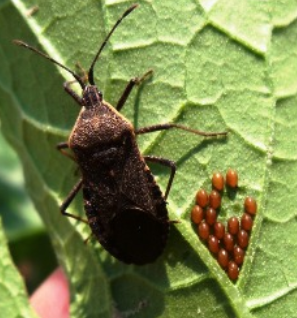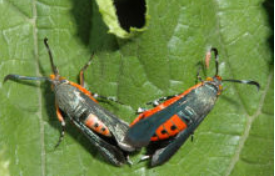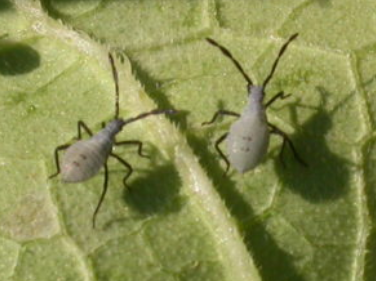Squash Your Squash Problems
go.ncsu.edu/readext?708268
en Español / em Português
El inglés es el idioma de control de esta página. En la medida en que haya algún conflicto entre la traducción al inglés y la traducción, el inglés prevalece.
Al hacer clic en el enlace de traducción se activa un servicio de traducción gratuito para convertir la página al español. Al igual que con cualquier traducción por Internet, la conversión no es sensible al contexto y puede que no traduzca el texto en su significado original. NC State Extension no garantiza la exactitud del texto traducido. Por favor, tenga en cuenta que algunas aplicaciones y/o servicios pueden no funcionar como se espera cuando se traducen.
Português
Inglês é o idioma de controle desta página. Na medida que haja algum conflito entre o texto original em Inglês e a tradução, o Inglês prevalece.
Ao clicar no link de tradução, um serviço gratuito de tradução será ativado para converter a página para o Português. Como em qualquer tradução pela internet, a conversão não é sensivel ao contexto e pode não ocorrer a tradução para o significado orginal. O serviço de Extensão da Carolina do Norte (NC State Extension) não garante a exatidão do texto traduzido. Por favor, observe que algumas funções ou serviços podem não funcionar como esperado após a tradução.
English
English is the controlling language of this page. To the extent there is any conflict between the English text and the translation, English controls.
Clicking on the translation link activates a free translation service to convert the page to Spanish. As with any Internet translation, the conversion is not context-sensitive and may not translate the text to its original meaning. NC State Extension does not guarantee the accuracy of the translated text. Please note that some applications and/or services may not function as expected when translated.
Collapse ▲Home vegetable gardens are bringing in many vegetables. It is a fun time as we harvest fresh veggies from our own backyards. However, it can become frustrating when dealing with disease and insects that like our vegetables as much as we do.
Squash (and cucumber) are becoming garden stars right now. They not only are bringing in a large veggie load, some are also showing signs of problems. Some may look like they are wilting. Their leaves may be droopy on a single vine or the entire plant. This may look a lot like heat or water stress, but these plants do not recover when more water is added or with cooler temperatures. They usually die. The cause of this could be cucurbit bacterial wilt. It is a bacterium that is transmitted by the striped and spotted cucumber beetles.
There is an easy way to determine if your plants are wilting due to bacterial wilt. You will want to check to see if the wilting vine is still attached to the plant. If it is, use a knife to cut the vine and very slowly pull the ends apart. If you see sticky strands or bacterial ooze, there is a good chance this plant is infected. A small piece can also be cut and placed in a clear glass with warm water. If it has bacterial wilt, you will be able to see a cloudy substance oozing from the cut piece.
Unfortunately, once a plant is infected with bacterial wilt there is not a lot a gardener can do to turn the plant back around. It is best to remove the plant from the garden site. This helps prevent the disease from spreading to other plants.
There are other squash issues that gardeners may be facing this time of year. Several insects can be devastating to a squash plant. The squash vine borer moth will lay its egg on the ground next to the stem or on the stem of a squash plant. Once the caterpillar hatches, it feeds on the stem for about 4 weeks. This causes the vine to wilt and die. Many times, it looks like it has collapsed overnight. The caterpillar will burrow in the ground and pupate (looks like a cocoon) over the winter and emerge as a moth next year. The moth is a pretty black and orange color and looks like a wasp, but it is a moth!
Gardeners have several control options. 1 – Grow crooked-neck squash rather than straight neck. Research shows that the vine borer has a preference. The squash vine borer loves Hubbard squash. On the other hand, butternut and cushaw squash are thought to be the most resistant. 2 – Aluminum foil or a small plastic cup can be used as a protective collar around the fines early on. Just make sure it is at least 2 inches high on the fine and somewhat buried in the soil. 3 – Spray the vines early with Bt. This is a natural bacterium that feeds on caterpillars. Make sure to apply on a cloudy day or in the evening. This will need to be reapplied if it rains within 24 hours of the application. 4 – If you see frass (sawdust like excretion from squash fine borer), cut a slit in the stem and remove the borer. Then, mound soil over the wound to induce rooting.
As if squash vine borer is not enough of a pest problem, there is also the squash bug gardeners need to look out for. Squash bugs are a relative of the stink bug. They feed on the sap of squash and related plants throughout the summer and into the fall. If there are enough of them, they can cause wilting and death of the squash plant, not to mention fewer squash to harvest! Gardeners may have seen their eggs already this gardening season. They lay the eggs in clusters on the top and bottom of squash, zucchini, and pumpkin leaves in early summer. They have a copper color.

Squash bugs are a relative of the stink bug. They lay their copper colored eggs in clusters on the top and bottom of squash, zucchini and pumpkin leaves in early summer.
Best management practice for squash bugs include examining squash plants every few days to remove and destroy any eggs or squash bugs that are found. Eggs can be squished or dropped into a cup or bucket of water with a few drops of dish detergent.
Gardeners may find young squash bugs which are called nymphs. They have gray bodies and black legs. Many of them will hang out together on the back of plant leaves. These can be removed and dropped into a bucket of soapy water or, if brave enough, they can be squished. These insects will not harm you. Adults can be found easily late in the evening usually on plant stems close to the ground. There are a few beneficial insects that will attack adult squash bugs. And, ground beetles seem to like their eggs. Pest management practices for this pest is to rotate your vegetables within your garden or even to another garden site and sanitation. Squash bugs overwinter as adults. Removing debris from the garden at the end of the season will reduce their overwintering sites.






